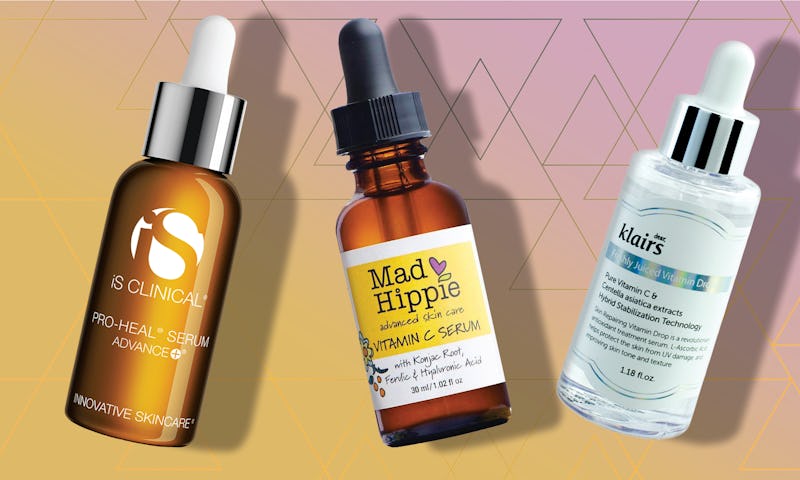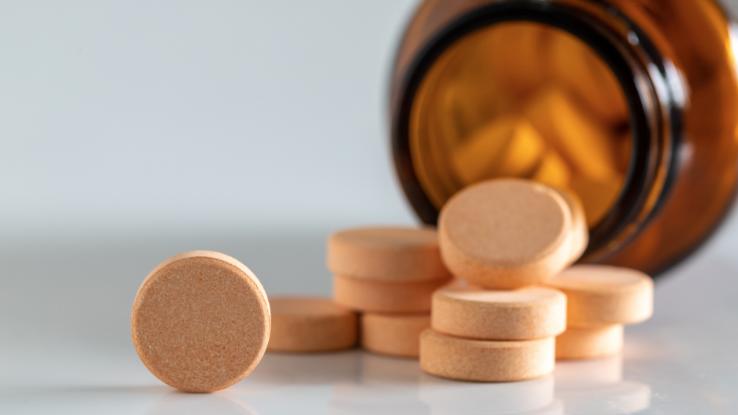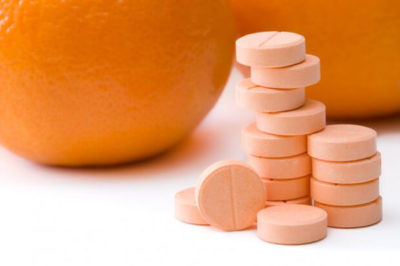Clomid Raises Testosterone
Indian J Urol. 2017 Jul-Sep; 33(3): 236–240.
Testosterone versus clomiphene citrate in managing symptoms of hypogonadism in men
Pranav Dadhich
Scott Department of Urology, Baylor College of Medicine, Houston, USA
Ranjith Ramasamy
1Department of Urology, University of Miami Miller School of Medicine, Miami, Florida, USA
Jason Scovell
Scott Department of Urology, Baylor College of Medicine, Houston, USA
Nathan Wilken
Scott Department of Urology, Baylor College of Medicine, Houston, USA
Larry Lipshultz
Scott Department of Urology, Baylor College of Medicine, Houston, USA
Received 2016 Nov 16; Accepted 2017 Feb 18.
This article has been cited by other articles in PMC.
Abstract
Introduction:
Both clomiphene citrate (CC) and testosterone supplementation therapy (TST) are effective treatments for men with hypogonadism. We sought to compare changes in symptoms and treatment efficacy in hypogonadal men before and after receiving CC and TST.
Patients and Methods:
52 men who received TST and 23 men who received CC for symptomatic hypogonadism were prospectively followed for change in hormone levels and symptoms after treatment. These men were also compared to eugonadal men who were not on CC or TST during the same period. Comparisons were made between baseline and posttreatment hormone levels and symptoms. Symptoms were evaluated using the androgen deficiency in aging male (ADAM) and quantitative ADAM (qADAM) questionnaires.
Results:
Serum total testosterone increased from pretreatment levels in all men (P < 0.05), regardless of therapy type (TST: 281–541 ng/dL, CC: 235.5–438 ng/dL). Men taking TST reported fewer ADAM symptoms after treatment (5–2, P < 0.05). Similarly, men taking CC reported fewer ADAM symptoms after treatment (3.5–1.5, P < 0.05). Conversely, eugonadal men had similar T levels (352 vs. 364 ng/dL) and hypogonadal symptoms (1.5 vs. 1.4) before and after follow-up. When we evaluated individual symptoms, men treated with TST showed significant increases in qADAM scores in libido, erectile function, and sports performance. However, among the men who received CC, qADAM subscore for libido was lower following treatment (3.75–3.2, P = 0.04), indicating that CC could have an adverse effect on libido in hypogonadal men.
Conclusions:
Both TST and CC are effective medications in treating hypogonadism; however, our study indicates that TST is more effective in raising serum testosterone levels and improving hypogonadal symptoms. CC remains a viable treatment modality for hypogonadal men but its adverse effect on libido warrant further study.
INTRODUCTION
Idiopathic age-related decline in testosterone in adult men is common, currently affecting close to 40% of adult males aged 45 and older.[1] Symptoms associated with decline in testosterone are often assessed using questionnaires such as the androgen deficiency in the aging male (ADAM) and quantitative ADAM (qADAM).[2,3] Lack of energy, erectile dysfunction, diminished libido, and a decrease in concentration are common symptoms in men with testosterone decline.[4,5,6] Although symptoms are a critical part of the definition of clinically relevant hypogonadism, there is a dearth of studies evaluating the effect of testosterone therapy on hypogonadal symptoms.[7]
Clomiphene citrate (CC) is frequently used off-label for the treatment of hypogonadism in men who wish to preserve reproductive function.[8,9] CC is a selective estrogen receptor modulator. Through modulation of estrogen receptors at the hypothalamus and pituitary, CC antagonizes the negative feedback of estradiol, thereby enhancing the release of follicle stimulating hormone (FSH) and luteinizing hormone (LH). Increase in LH subsequently raises serum testosterone levels through its action on Leydig cells in the testis.[10] CC can, theoretically, improve hypogonadal symptoms while maintaining testosterone levels for up to 3 years.[11] As expected, other studies have reported that men receiving CC had an increase in serum levels of testosterone, FSH, and LH.[12]
In a cross-sectional retrospective age-matched analysis, we have previously demonstrated that men receiving testosterone injections had higher serum testosterone levels compared to those taking CC.[11] Nevertheless, both men receiving CC and testosterone injections reported similar baseline hypogonadal symptoms. Our cross-sectional analysis was unable to address whether testosterone supplementation and CC would improve specific hypogonadal symptoms. Therefore, we performed a prospective cohort study comparing hypogonadal symptoms and treatment efficacy in men receiving testosterone supplementation therapy (TST) and CC. A control group of eugonadal men, who did not receive TST or CC, was included to improve the validity of the study.
PATIENTS AND METHODS
After approval from the Institutional Review Board, we assessed hypogonadal symptoms using the ADAM and qADAM questionnaire. The standard ADAM questionnaire consists of ten "yes or no" questions concerning symptoms of androgen deficiency (range 0–10). The qADAM questionnaire builds on the "ADAM" questionnaire using the same ten equally weighted questions from the original document but utilizes a Likert scale of 1–5 to quantify each response rather than a yes or no answer. Through quantification, the magnitude of particular symptoms can be assessed. qADAM scores range from 10 to 50, and higher scores indicate less severe hypogonadal symptoms; however, no particular threshold score is known to accurately diagnose hypogonadism.
Our study group included 52 men on TST and 23 men on CC. All men had two separate values of early morning total serum testosterone <300 ng/dL associated with ≥3 hypogonadal symptoms verified on the ADAM questionnaire. Men who complained of infertility alone were excluded because fertility treatment alone could impair libido and erectile function. We also excluded men with secondary hypogonadism (below normal LH and FSH). Men received CC if they wanted to preserve fertility during treatment of hypogonadal symptoms. The goal of therapy was symptom improvement rather than a target threshold level of testosterone.
During the same study period, 52 eugonadal men who were not receiving TST or CC were included as a control group for comparison. These men underwent hormone estimation and were treated for benign urological conditions such as erectile dysfunction and lower urinary tract symptoms. These eugonadal men were not receiving TST or CC.
Of the men on TST, 27 received testosterone injections and 25 men received testosterone gel. We previously reported hormone levels and symptoms (ADAM questionnaire alone) on the 52 men that received TST.[7] We report the individual subscores on the qADAM questionnaire in men who received TST in this study and compare them to men who received CC during the same period.
Treatment efficacy was evaluated by comparing pre- and post-treatment serum testosterone levels. Pre- and post-treatment values were determined at the same visit that ADAM and qADAM questionnaires were completed. Testosterone and estradiol were measured by radioimmunoassay using the Access® 2 Immunoassay System. Since there is known time-related variability in serum testosterone concentration in men on testosterone injections, samples were collected during the scheduled patient follow-up visit with no special concern for the timing of the last injection. Variability in levels was obviated by the random nature of the draw and the number of patients surveyed. Data were analyzed using Excel® and IBM SPSS (IBM SPSS Statistics 21, Armonk, NY, USA). All values are shown as the mean ± standard deviation. The Mann–Whitney test was used to evaluate differences between groups with P ≤ 0.05 considered statistically significant.
RESULTS
Men receiving CC were younger than men taking TST (36 vs. 51, P = 0.01). Testosterone levels increased in men who received CC and TST (CC: 235–438 ng/dL, P < 0.05; TST: 231–541 ng/dL, P < 0.05). As expected, men who received TST had a larger and significant increase (delta) in average serum testosterone (310 ng/dL) compared to men taking CC (233 ng/dL, P = 0.04). Nevertheless, change in estradiol levels were similar between both men who received CC and men who received TST (3.5 ng/dL vs. 3.6 ng/dL, P = 0.87).
Both cohorts who received CC and TST had improvements in hypogonadal symptoms using the ADAM (CC: 3.5 vs. 1.5; TST: 5.0 vs. 2.0, P < 0.05) and qADAM questionnaire (CC: 30.7–32.5; TST: 32–36, P < 0.05). While both men on CC and TST had improvements in hypogonadal symptoms, men on TST experienced greater symptom resolution as measured by qADAM [Table 1]. This increase in qADAM indicates that patients on TST displayed a significant quantifiable improvement in symptoms and experience less severe hypogonadal symptoms than men taking CC. Conversely, eugonadal men had similar T levels (352 vs. 364 ng/dL) and hypogonadal symptoms (1.5 vs. 1.4) before and after follow-up.
Table 1
Comparison of characteristics of men receiving clomiphene citrate versus testosterone supplementation therapy

When we evaluated individual symptoms, men treated with TST showed significant increases in qADAM scores in libido (2.74–3.70, P ≤ 0.001), energy (2.54–3.35, P ≤ 0.001), strength (2.19–3.44, P ≤ 0.001), enjoyment (3.36–3.80, P ≤ 0.001), overall happiness (3.24–3.59, P = 0.011), erectile function (2.62–3.29, P = 0.001), work performance (3.37–3.68, P = 0.035), tendency to fall asleep (2.10–1.65, P = 0.003), and sports performance (2.86–3.20, P = 0.025). There were no differences in qADAM scores between the different TST modalities. Patients receiving CC only showed a significant benefit with respect to sports performance (3.14–3.57, P = 0.035). Remarkably, among the men who received CC, the qADAM subscore for libido was lower following treatment (3.75–3.2, P = 0.04), indicating that CC could have an adverse effect on libido in hypogonadal men. No other subscores on the qADAM demonstrated a significant change in men who received CC [Table 2].
Table 2
Comparison of quantitative androgen deficiency in the aging male scores before and after therapy with clomiphene citrate and testosterone

DISCUSSION
Our study on the effects of TST and CC on patient outcomes (hormone levels and symptoms) has confirmed that both TST and CC are efficacious in treating hypogonadism; however, the magnitude of treatment effect seen in males who received TST was better. Our analysis showed that patients receiving TST achieved greater increases in serum testosterone and better symptom resolution (higher qADAM scores) compared to those who were treated with CC. On further analysis of the qADAM subscores, our study described significant increases in all categories assessed aside from height after treatment with TST, whereas men who received treatment with CC reported improved sports ability but worse libido.
The association between hypogonadal symptoms and serum testosterone levels has been well documented. The previous investigation by the European Male Aging Study group delineated a significant inverse correlation between serum testosterone levels and the presence of poor morning erections, low sexual desire, and erectile dysfunction.[6] Recent retrospective investigation shows that patients treated with either TST or CC reported similar hypogonadal symptoms; on average patients receiving CC, testosterone injections and gels reported total qADAM of 35, 39, and 36, respectively.[11]
The results of this current study show that even though patients prescribed CC had an increase in overall qADAM score, patients reported a significant decrease in libido. The etiology of this CC effect on libido has not been fully elucidated, but it is theorized that modulation of the estrogen receptor could have negative effects on libido. Estrogen, despite widely considered a "female" hormone, remains important to maintain libido in men.[13] However, modulation of the estrogen receptor by CC can impair estrogen's action and subsequently cause impaired sex drive.[13] Although CC is effective in improving overall hypogonadal symptoms, CC appears, in this study, to negatively affect libido. Larger studies are needed to validate the effect of CC on libido.
Although a prospective study design was created to explore the subtle differences of hypogonadal therapy, there are some limitations to the study. The first limitation to address is potential ambiguity regarding the impetus for therapy with CC. Men utilizing CC were younger, reported higher pretreatment libido scores, and used CC to aid with both hypogonadism as well as to preserve fertility rather than treat hypogonadal symptoms alone, thus creating a disconnect between the rationale of TST versus CC treatment. Nevertheless, men with infertility and low testosterone appear to report hypogonadal symptoms similar to men without infertility.[14] The ADAM and qADAM questionnaires are validated for cross-sectional comparison of serum testosterone and hypogonadal symptoms. Since there are no questionnaires that are universally validated to study the change in hypogonadal symptoms, we used ADAM and qADAM questionnaires that are commonly used and easy to administer in clinic.[15] Given the nonparametric nature of the data, power analysis would have been difficult to perform and potentially inaccurate due to reliance on data simulation; however, the utility of this analysis is apparent and will be incorporated in the further analysis. Another limitation and challenge of this study were the lack of an a priori power calculation. However, we anticipate this data will serve as a reference to determine sample size in future work comparing TST and CC for hypogonadal symptoms. Multiple hypothesis testing was not performed at this time due hypothesis-generating nature of the study.
The sample size of patients is not large, often secondary to the intent of the patients, as patients with no desire to preserve fertility tend to prefer TST therapy as they are not as familiar with CC. The study utilizes 2:1 allocation and although not ideal, is acceptable given the nature of the study.
Hypogonadal symptoms are subjective, which can complicate patient diagnosis and identify success with treatment. One confounding factor is that patient satisfaction may vary based on psychological perceptions about potential benefits conferred from therapy. Perceptions regarding the type of therapy prescribed could also have impacted patient's expectations. Outcomes could also have been further impacted by preexisting medical comorbidities as these variables were not explicitly factored into the analysis. The difference between follow-up times is different and may suggest differences in patient satisfaction between the two therapies, although this interpretation was not explored in this current study. Because there exists a large number of young men, who present with hypogonadal symptoms but need preservation of fertility, a better understanding about the benefit or lack thereof for alternative treatment options will be important when providing and discussing treatment options for this population.
CONCLUSIONS
Both TST and CC are effective medications in treating hypogonadism; however, our study indicates that TST is more effective in raising serum testosterone levels and improving hypogonadal symptoms. CC remains a viable treatment modality but its adverse effect on libido merits further study.
Footnotes
Financial support and sponsorship: Nil.
Conflicts of interest: There are no conflicts of interest.
REFERENCES
1. Mulligan T, Frick MF, Zuraw QC, Stemhagen A, McWhirter C. Prevalence of hypogonadism in males aged at least 45 years: The HIM study. Int J Clin Pract. 2006;60:762–9. [PMC free article] [PubMed] [Google Scholar]
2. Morley JE, Charlton E, Patrick P, Kaiser FE, Cadeau P, McCready D, et al. Validation of a screening questionnaire for androgen deficiency in aging males. Metabolism. 2000;49:1239–42. [PubMed] [Google Scholar]
3. Mohamed O, Freundlich RE, Dakik HK, Grober ED, Najari B, Lipshultz LI, et al. The quantitative ADAM questionnaire: A new tool in quantifying the severity of hypogonadism. Int J Impot Res. 2010;22:20–4. [PMC free article] [PubMed] [Google Scholar]
4. Bhasin S, Cunningham GR, Hayes FJ, Matsumoto AM, Snyder PJ, Swerdloff RS, et al. Testosterone therapy in adult men with androgen deficiency syndromes: An endocrine society clinical practice guideline. J Clin Endocrinol Metab. 2006;91:1995–2010. [PubMed] [Google Scholar]
5. Traish AM, Miner MM, Morgentaler A, Zitzmann M. Testosterone deficiency. Am J Med. 2011;124:578–87. [PubMed] [Google Scholar]
6. Wu FC, Tajar A, Beynon JM, Pye SR, Silman AJ, Finn JD, et al. Identification of late-onset hypogonadism in middle-aged and elderly men. N Engl J Med. 2010;363:123–35. [PubMed] [Google Scholar]
7. Ramasamy R, Wilken N, Scovell JM, Lipshultz LI. Effect of testosterone supplementation on symptoms in men with hypogonadism. Eur Urol. 2015;67:176–7. [PubMed] [Google Scholar]
8. Willets AE, Corbo JM, Brown JN. Clomiphene for the treatment of male infertility. Reprod Sci. 2013;20:739–44. [PubMed] [Google Scholar]
9. Moskovic DJ, Katz DJ, Akhavan A, Park K, Mulhall JP. Clomiphene citrate is safe and effective for long-term management of hypogonadism. BJU Int. 2012;110:1524–8. [PubMed] [Google Scholar]
10. Goldstein SR, Siddhanti S, Ciaccia AV, Plouffe L., Jr A pharmacological review of selective oestrogen receptor modulators. Hum Reprod Update. 2000;6:212–24. [PubMed] [Google Scholar]
11. Ramasamy R, Scovell JM, Kovac JR, Lipshultz LI. Testosterone supplementation versus clomiphene citrate for hypogonadism: An age matched comparison of satisfaction and efficacy. J Urol. 2014;192:875–9. [PubMed] [Google Scholar]
12. Katz DJ, Nabulsi O, Tal R, Mulhall JP. Outcomes of clomiphene citrate treatment in young hypogonadal men. BJU Int. 2012;110:573–8. [PubMed] [Google Scholar]
13. Finkelstein JS, Yu EW, Burnett-Bowie SA. Gonadal steroids and body composition, strength, and sexual function in men. N Engl J Med. 2013;369:2457. [PubMed] [Google Scholar]
14. Satkunasivam R, Ordon M, Hu B, Mullen B, Lo K, Grober E, et al. Hormone abnormalities are not related to the erectile dysfunction and decreased libido found in many men with infertility. Fertil Steril. 2014;101:1594–8. [PubMed] [Google Scholar]
15. Bernie AM, Scovell JM, Ramasamy R. Comparison of questionnaires used for screening and symptom identification in hypogonadal men. Aging Male. 2014;17:195–8. [PubMed] [Google Scholar]
Source: https://www.ncbi.nlm.nih.gov/pmc/articles/PMC5508437/



























